Field Guide
San Bernardino flying squirrel (Glaucomys oregonensis californicus)

A medium-sized squirrel that is active mainly at night. It is usually found in coniferous forest from 4,500 to 11,000 feet above sea level. It is mostly arboreal but can be found foraging on the ground. Upperparts vary in color from light to dark browns. Underparts are grayish white. A distinguishing section of skin extends from the wrist of forelegs to the ankle of the hind legs. This structure is primarily used for gliding short distances between trees.
Photo By: Dr. Lloyd Glenn Ingles
© California Academy of Sciences
Gray squirrel (Sciurus griseus anthonyi )
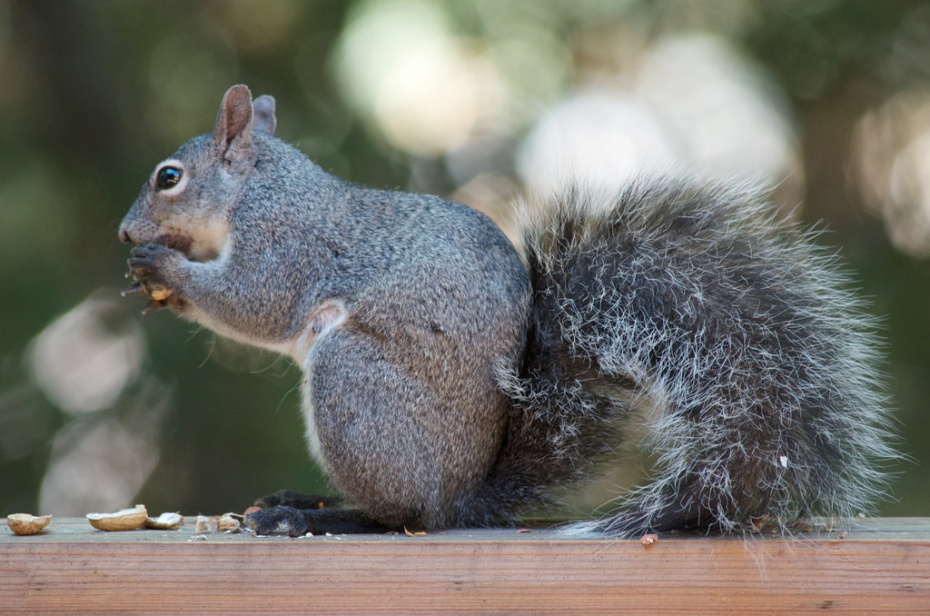
A large squirrel that is active mainly during the day. It is found in oak woodland and coniferous forest from 3,000 to 11,500 feet above sea level. It is mostly arboreal but can be found foraging on the ground and will run to the nearest tree when alarmed. Upperparts are mostly gray and underparts are white. The bark of this squirrel can be heard for long distances.
Photo By: Jon Sullivan
https://www.flickr.com/photos/mollivan_jon/
Golden-mantled ground squirrel
(Callospermophilus lateralis bernardinus )
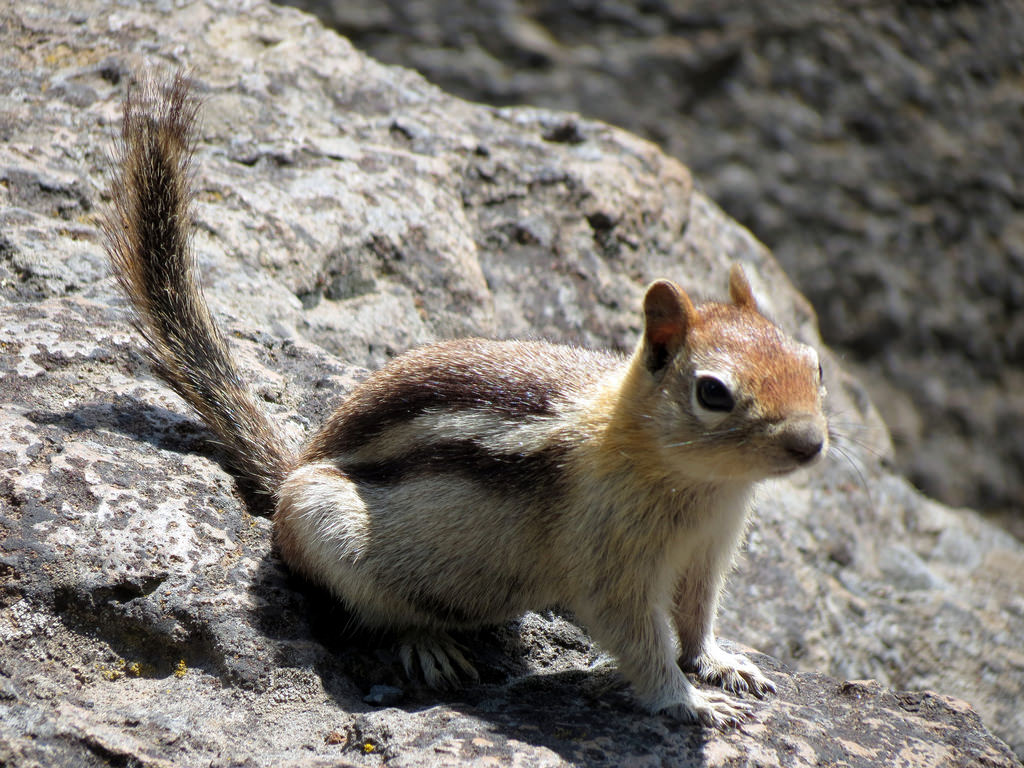
A medium-sized squirrel that is active mainly during the day. It is found in mixed coniferous forest at elevations of 4,500 to 11,000 feet above sea level, where it prefers more open canopy. Spends most of the day on the ground but may climb bushes and trees to forage for food. This squirrel can easily be mistaken for a chipmunk because of the stripes on its back, but the gold colored hair of the head and nape separate it from the dull brown hair of the chipmunk.
Photo By: Nick Varvel
https://www.flickr.com/photos/131231326@N04/
California ground squirrel (Otospermophilus beecheyi parvulus )
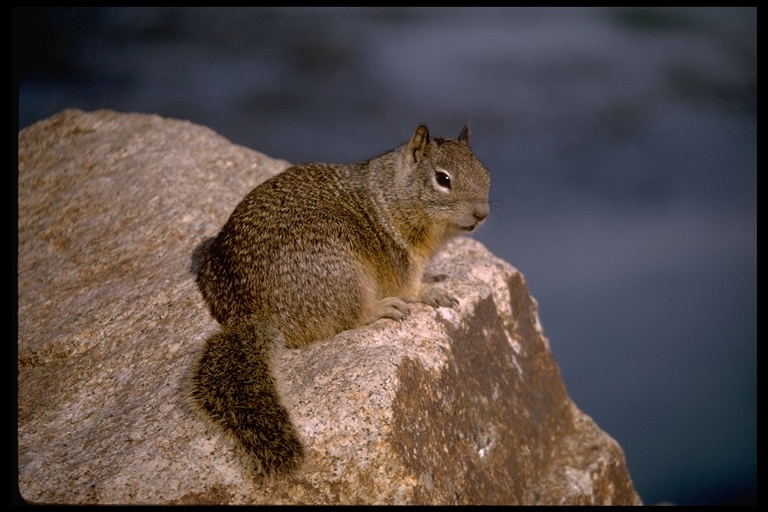
This large terrestrial squirrel is active only during the day. It can be found from the base of the mountains to 11,500 feet above sea level and is locally common in all habitat types, with a strong preference for disturbed sites. It is a true omnivorous, known to consume seeds, fruit, fungi, leaves, stems, insects, carrion, and other small mammals. The upperparts vary in color from light to dark brown but best distinguished by an inverted ‘v’ around shoulders that is gray in color.
Photo By: Sherry Ballard
© California Academy of Science
Lodgepole chipmunk (Neotamias speciosus speciosus )
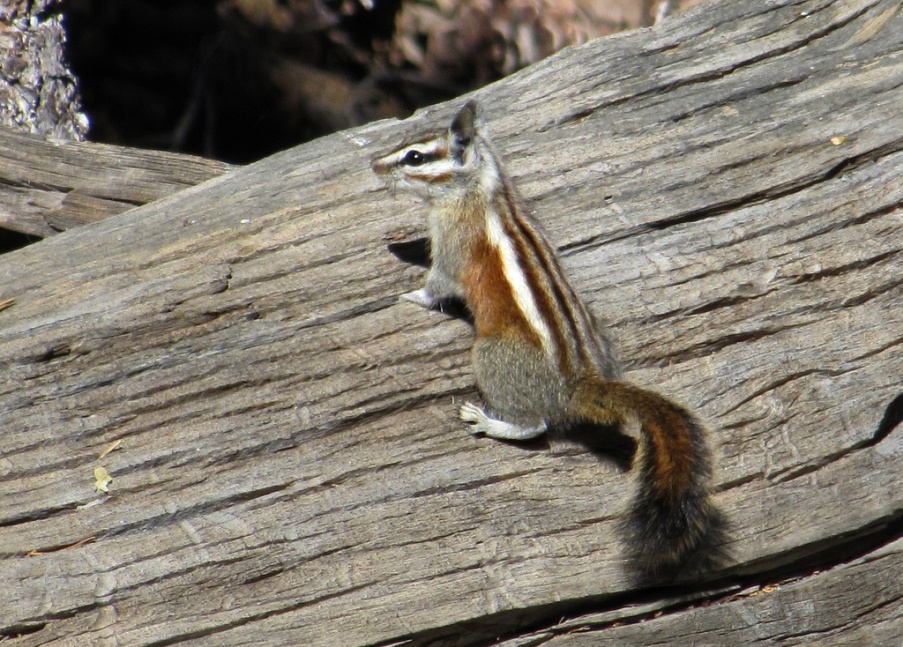
This small chipmunk is active only during the day and mostly found foraging near fallen trees, shrub, or rock. It is the most arboreal of all the chipmunks in the San Bernardino Mountains. It is usually found in coniferous forest from 6,000 to 11,000 feet above sea level. Color on back has varying tones from gold to dark brown. Lengthwise black and white stripes on the side of face lead along back to rump. It is difficult to separate this from the other two species of chipmunk in the area. The best field character is the presence of pronounced white stripes on the side of face and dorsum.
Photo By: Ryan Padilla
https://www.flickr.com/photos/ryansflikr/
Merriam's chipmunk (Neotamias merriami merriami )
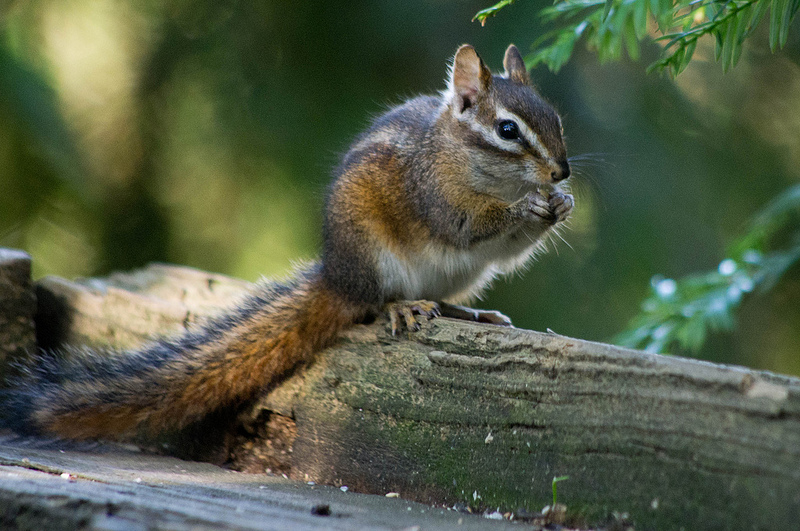 This small chipmunk is active only during the day and mostly found foraging near fallen trees, shrub, or rock. Rarely does it climb trees. It is found in many habitat types including chaparral, oak woodland, and coniferous forest from 6,000 to 11,000 feet above sea level. Color on back has varying tones from gold to dark brown. Lengthwise black and white stripes on the side of face lead along back to rump.
This small chipmunk is active only during the day and mostly found foraging near fallen trees, shrub, or rock. Rarely does it climb trees. It is found in many habitat types including chaparral, oak woodland, and coniferous forest from 6,000 to 11,000 feet above sea level. Color on back has varying tones from gold to dark brown. Lengthwise black and white stripes on the side of face lead along back to rump.
Photo by: Fred Hochstaedter
https://goo.gl/te0ixY
California chipmunk (Neotamias obscurus davisi )
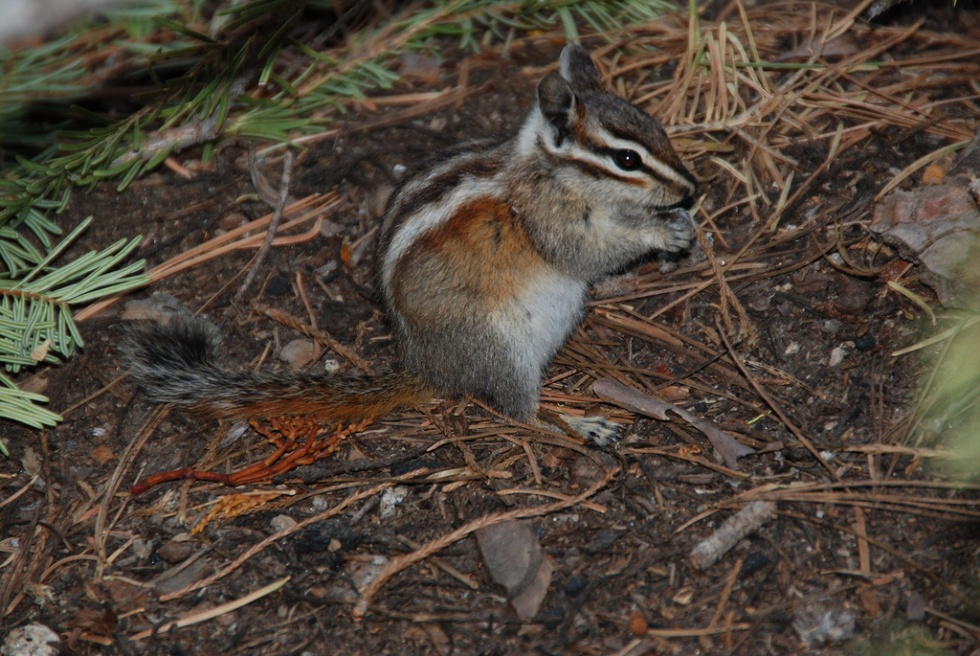
This small chipmunk is active only during the day and mostly found foraging near fallen trees, shrub, or rock. Rarely does it climb trees. It is found in many habitat types including chaparral, Joshua tree, pinyon juniper, oak woodland, pinyon pine, and coniferous forest from near 500 to 11,000 feet above sea level. Color on back has varying tones from gold to dark brown. Lengthwise black and white stripes on the side of face lead along back to rump. Identification is problematic and accomplished best by comparing the base of hairs of the neck and chest. Such hairs are black at their base in the California chipmunk and white in Merriam’s chipmunk.
Photo By: Sek Keung Lo
https://www.flickr.com/photos/losk/


